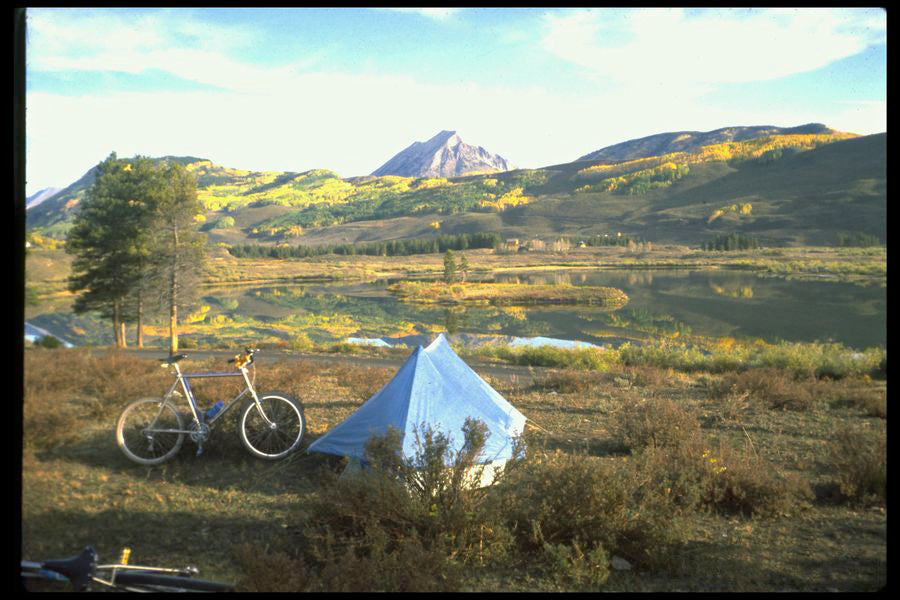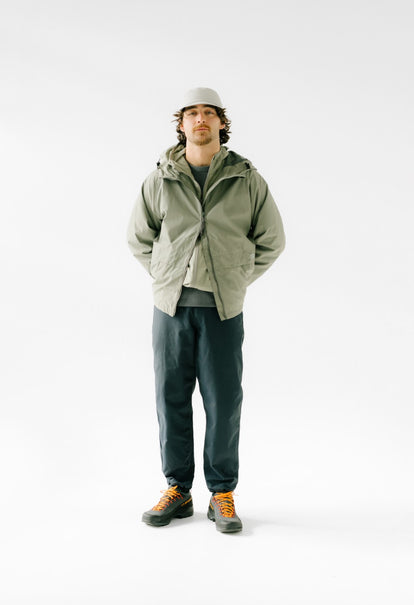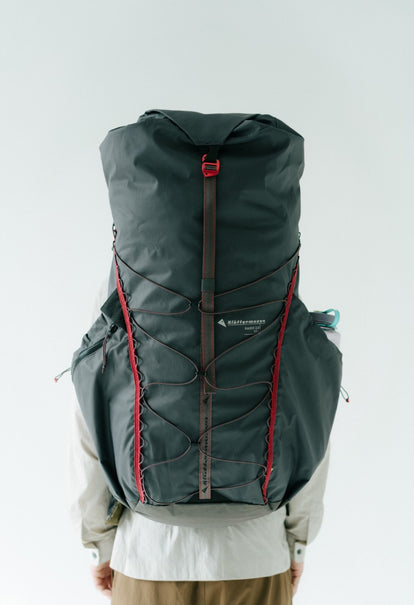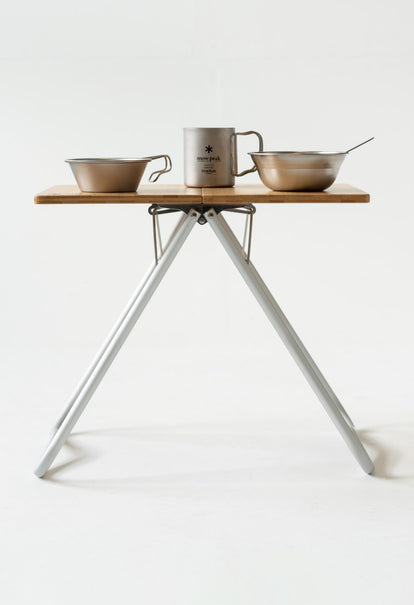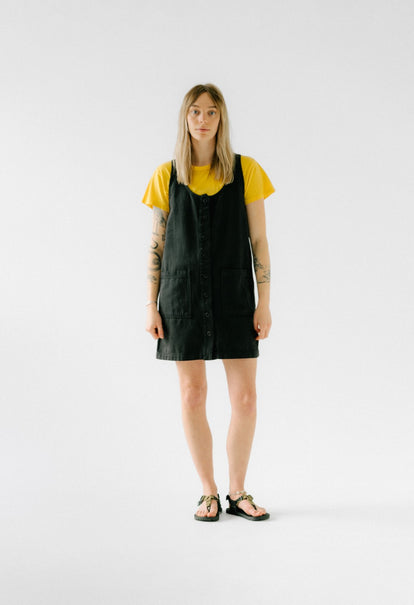
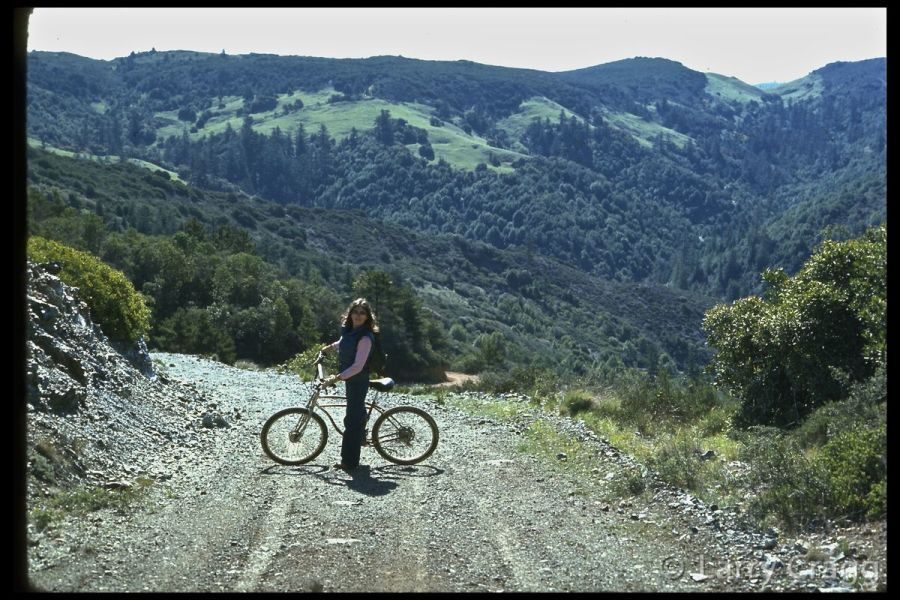

Every subculture starts somewhere. For mountain biking, its origins lie in the hills of Marin County, over the Golden Gate bridge from San Francisco, back in the mid 70s—when a gang of free-thinking cyclists took their old town bikes off-piste and started bombing down a ruthless fireroad known locally as ‘Repack’.
Although others had taken bikes off the beaten path before (the art of ‘pass hunting’—conquering mountain passes in a hike-a-bike style—had a niche following in France by the early 70s, and in Britain the brave members of the Rough Stuff Fellowship had been rattling around since the 50s), it’s probably fair to say that it was the Marin riders who transformed off-road cycling from a niche subculture into a worldwide fat-tyred phenomenon.
Rather than just struggling along with touring bikes, these long-haired two-wheeled pioneers sought out a different method—first opting for pre-WW2 Schwinn Excelsior cruisers (known as ballooners or klunkers), before eventually honing their own purpose-built bikes, complete with lightweight chro-moly steel tubing, riser bars and chunky tyres. What’s more, they rode with style—and like the Stonemasters in Yosemite 200 miles east, they dressed more like Grateful Dead roadies than explorers or athletes.
Wende Cragg was there to document it all—and whilst the birth of most movements is often captured in an amateur, snapshot manner, her full-colour images had the bright colours and clever compositions you’d expect from a prime-era National Geographic article.
A rider herself, her photos showed not just the foot-out downhill action, but also the quieter moments on the mountain—giving a 35mm window into a two-wheeled world long before dropper seatposts and bike resort season passes. Now working as a textile artist—she still rides today, and when she’s not in the mountains she finds time to catalogue her images for a project known as the Rolling Dinosaur Archive.
Here’s an interview with her about photography, bikes, California, wildflowers and food…
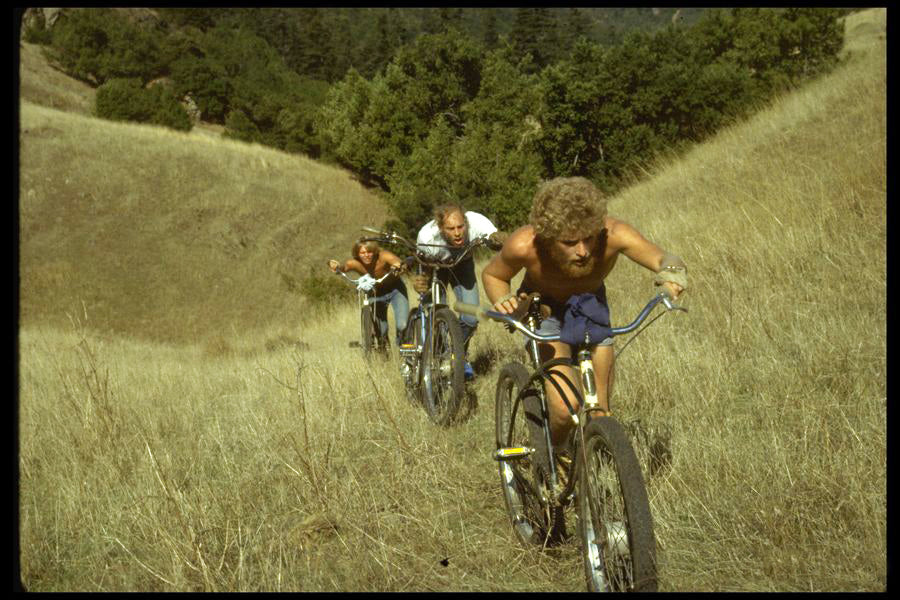

Sam: Starting right back at the beginning, what came first—photography, or cycling?
Wende: I’d been riding about a year or so before I bought my own camera. My ex-husband, Larry, and I had been sharing the same Nikkormat. As a textile artist, I wanted to document my work. I purchased a new camera in the Fall of 1976 and we shared and swapped our collective lenses, including a macro lens, which was utilized in wildflower photography as well as detail shots of my fabric art.
Sam: When did you get involved with the activity that became known as ‘mountain biking’?
Wende: My first ride occurred on a hot August day, 1975. It did not go well and my initial ride was not pleasant. My first klunker weighed in at 56lbs, and was nearly half my body weight, so an obvious disadvantage. After a few rough gos, I finally adapted to the idea and the rest is history.
Sam: When did you realise that what you and your friends were doing was something new?
Wende: There were just a handful of us, we could have been counted on two hands. Word spread slowly, like osmosis. Converts were rare but those who embraced it, did so readily. We were somewhat hesitant to spread the word for fear of the inevitable ‘one bad apple’. There was a lot of interest in this novelty, especially among established road riders who already had a relationship with cycling, but the concept was viewed with a skewed eye.
Gradually, it became obvious we’d stumbled upon something magical. Gary Fisher said it best, “We shared the most marvellous secret.”
Sam: Maybe a tough question, but why Marin County? What was it about that place at that time that made the perfect petri dish for this new subculture?
Wende: The S.F/Bay Area has always been a special place, not just scenically, but in terms of talented individuals who think outside the box. The subculture consisted of really talented individuals who liked to tinker. They were artisans in their own right, always perfecting, tweaking an idea. Marin County is a wealthy county—we are rich in culture, the arts and charismatic characters. A crazy quilt of nonconformists, outlaws and rebels. A real, imagined concept was oftentimes taken to different levels by way of trial and error. These ‘test’-osterone pilots were driven by necessity and a desire to outperform their competition.
Sam: Whilst off-road cycling had been going on before what you and your friends were doing—what set your group apart?
Wende: We really were just a group of longhairs with time and talent to spare. We juggled jobs, relationships and responsibilities with an eye on the ride. Some of the guys were already seasoned roadies and members of a local bike club, Velo Club Tam (as was I, later) so daily training rides were usually on their agenda. A love of cycling, easy access to gorgeous locales and a flexible schedule allowed us the freedom to explore our surroundings.
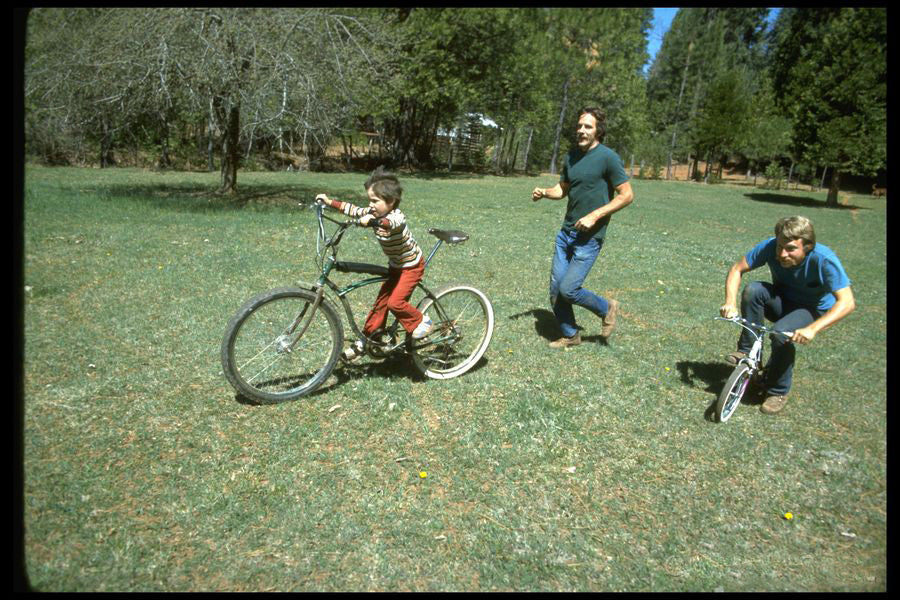

Sam: When did you first start documenting the bike rides? Were you conscious that the photos were something that 50 years later people would find important?
Wende: Originally, the camera was taken on rides to shoot wildflowers and mushrooms that we discovered. It was total happenstance that I turned the lens on the folks I was riding with. It certainly never occurred to me that someone might find them of interest nearly 50 years after the fact but I’m thrilled!
Sam: What did you do with the photos back then? Were they published at the time, or were they just for your friends to look at?
Wende: Initially, the idea was to share among friends but as interest grew, so did the range of media curiosity. It was a few years before the general public took note but a couple of cycling mags and publications were attracted to this new cycling phenom… klunking.
Charlie Kelly had written a couple of articles by then and needed images to accompany the text. It was a symbiotic relationship that furthered the advancement of what Charlie declared ‘The Smallest Sport in the World’.
Sam: At that time it’s not like people had really photographed mountain biking before. What were you looking at for inspiration?
Wende: As an artist, I tend to view the most commonplace things as artistically appealing. I was more focused on candid, intimate captures of the people and places rather than the action aspect of the sport—the downhill racing—although the Repack races were a focal point for the motley convergence of many like-minded devotees.
Sam: What was your standard camera set-up back then? I imagine trekking into the hills keeping your equipment fairly light would have been relatively important.
Wende: Weight was definitely a consideration. However, my camera was a hefty addition to an already cumbersome circumstance, the heavy bike. In addition, I usually packed along an extra lens, film, a mini tripod and oftentimes, my wildflower guide books! So, most likely about another five extra pounds.
Sam: Haha—you weren’t exactly travelling light then. You raced in the infamous Repack downhill events. Can you give a bit of an explanation of what that was like?
Wende: Terrifying! It’s a very challenging course, rocky and rutted. I raced the first few races and hold the record for fastest woman (5:29), but I never felt entirely comfortable hitting those speeds without a feeling of impending doom. I wiped out after my third attempt and decided then to retire from further Repack competition. My ex-husband Larry and I photographed every event except the very first, which we both raced.

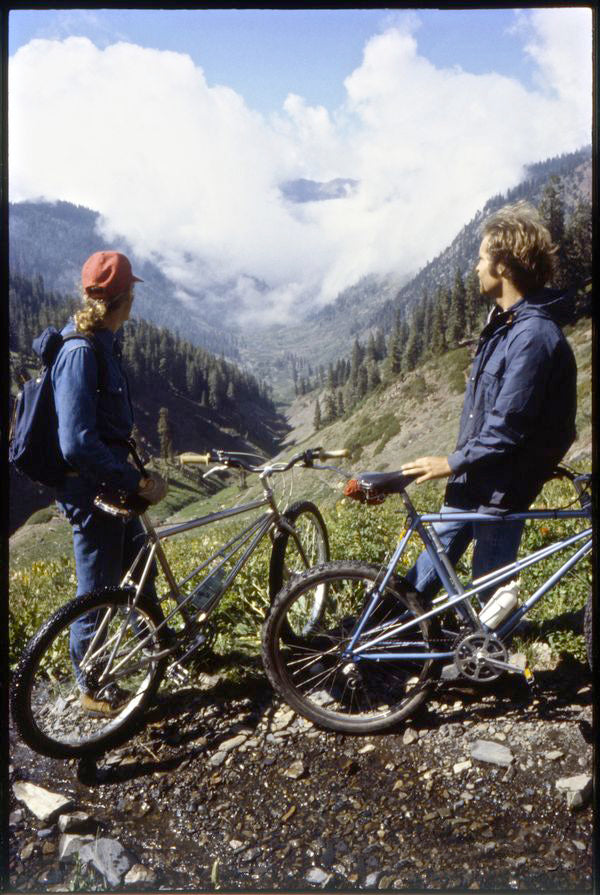

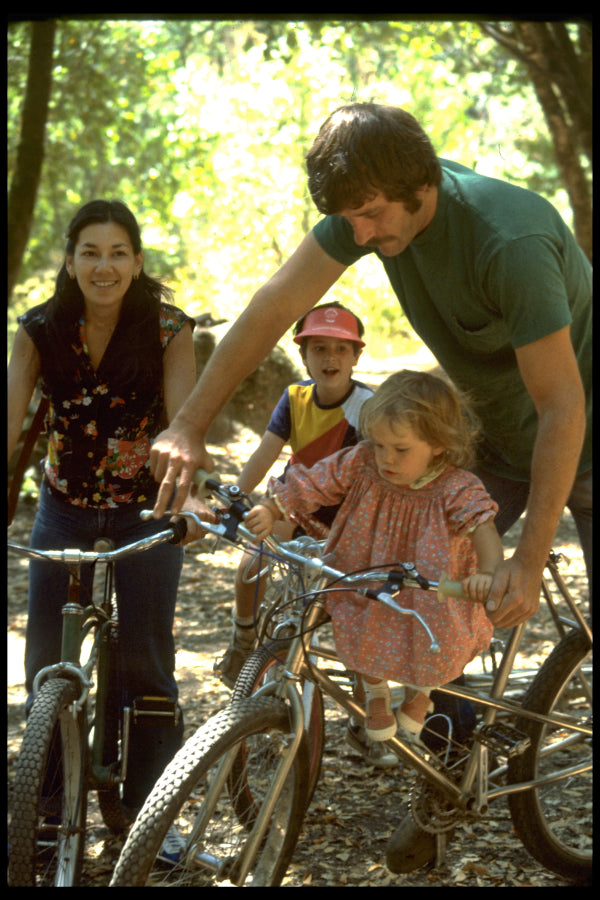
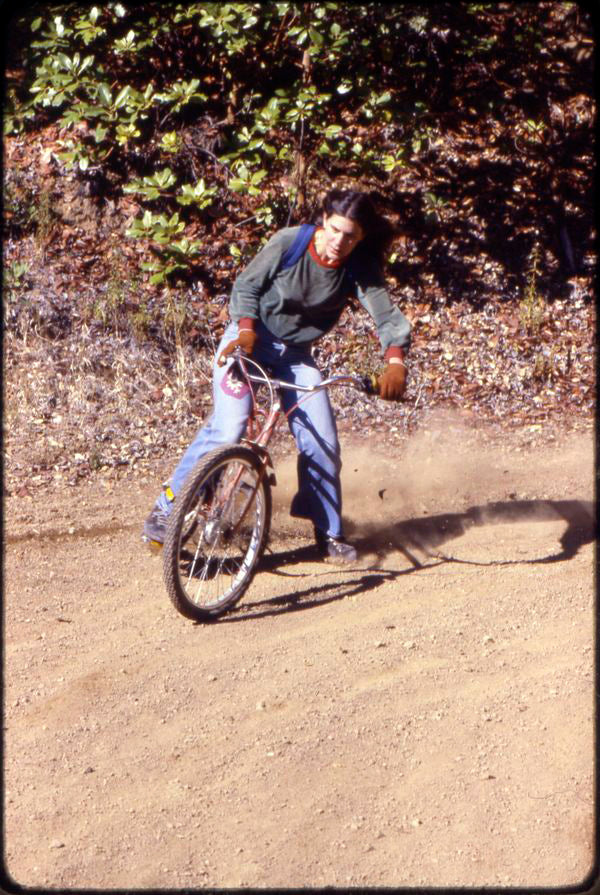
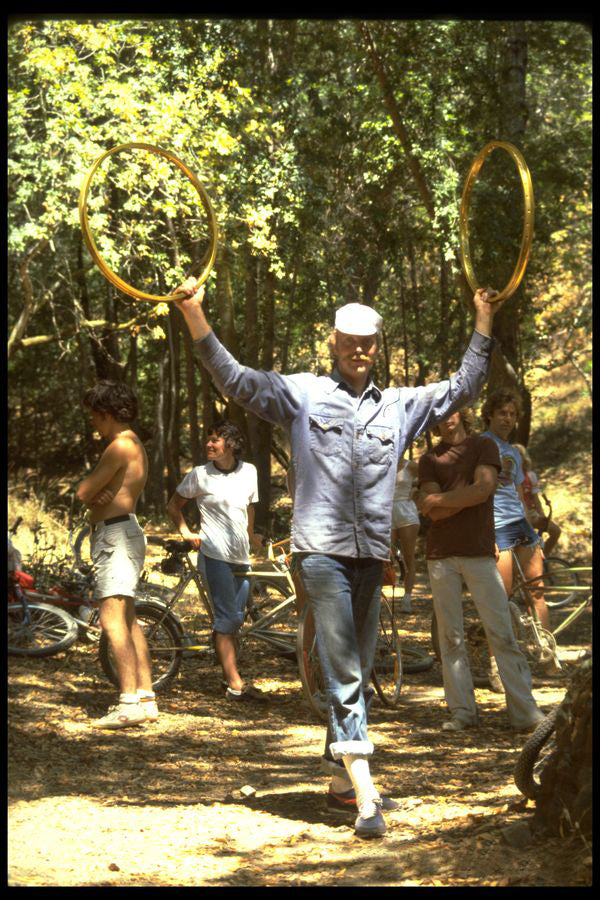
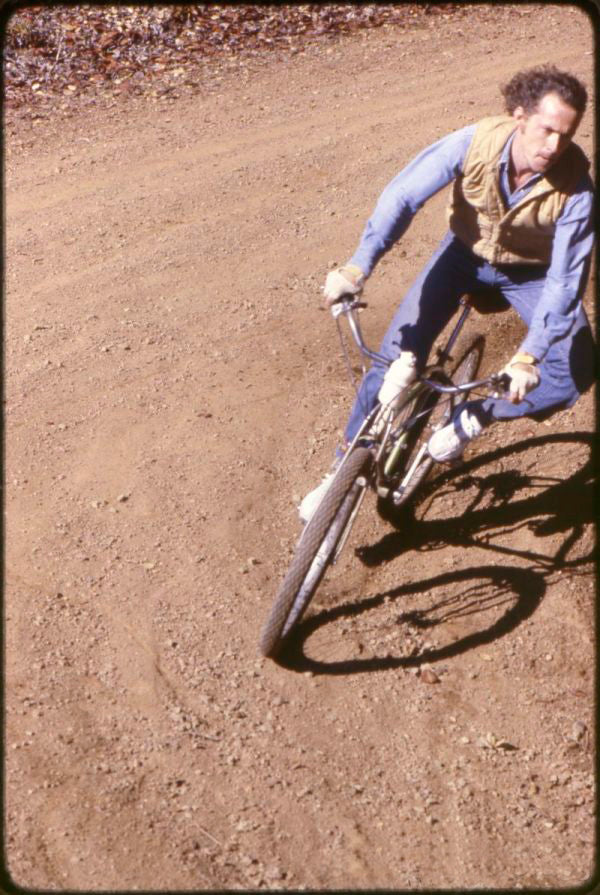
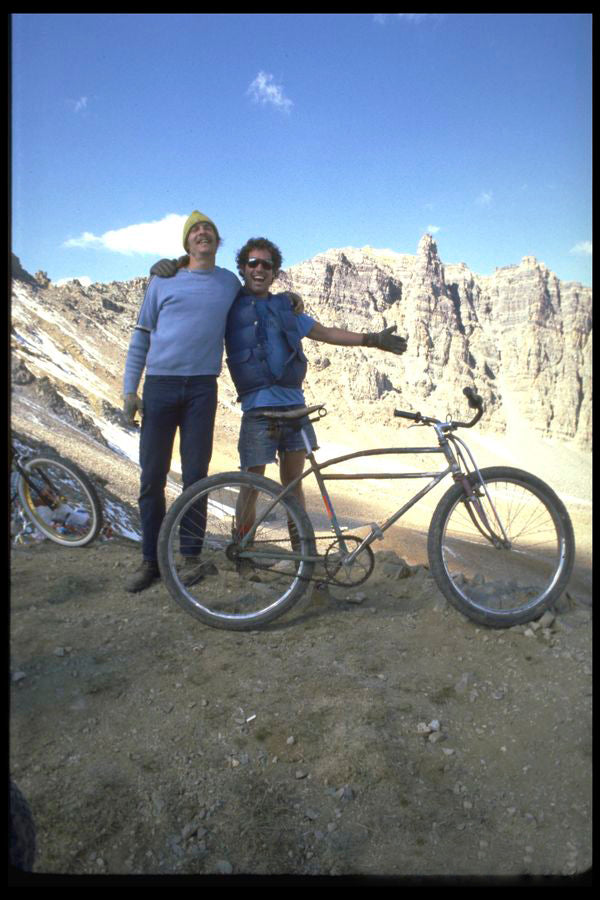
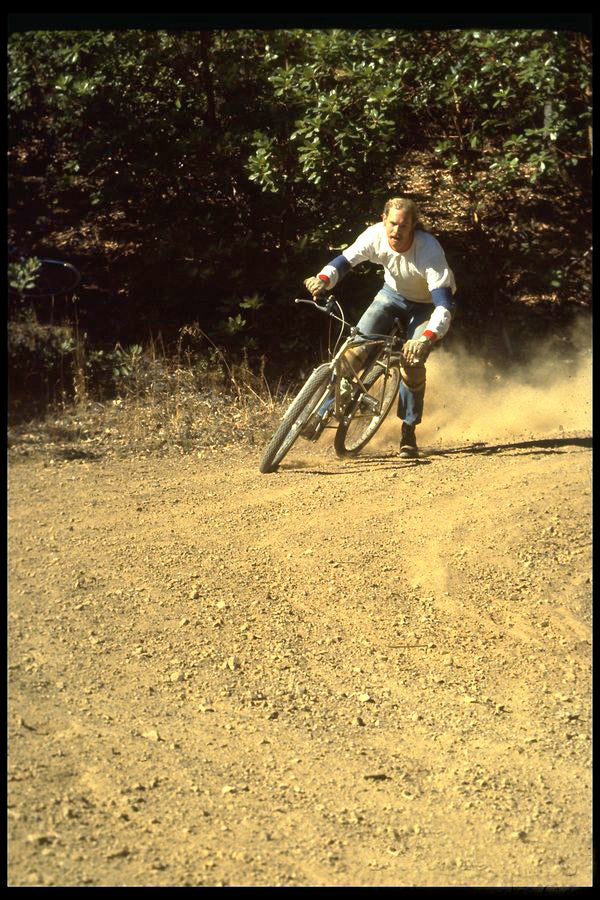
Sam: When you weren’t racing Repack, what was an average ride like?
Wende: An “average” ride was usually an out-and-back or a loop. We had so many routes and we catered to the weather at hand. In the heat of the summer, we’d head to the coast for its cool temps and stunning ocean views. Springtime was especially nice, wildflowers a’bloom and hills green. We generally liked to include a climb of some sort. A workout was always to be had, considering we pushed uphill a lot of the time!
Sam: Whereas a sports photographer would have just shot the riding, you documented it all—from the people to the bikes. Was it a conscious thing to try and show the life around the bikes, and not just the riding?
Wende: It may have been that I was just enjoying my new toy—my camera—and clicking away as I went. We had lots of opportunities for relaxed, intimate shots taken before, during and after rides. There was never a shortage of colorful visuals, we were an interesting mix of individuals, bikes, dogs, kids and amazing scenery.
Sam: What else was going on around the riding? What music did people listen to? What food did people eat?
Wende: Oh boy, that question would fill a book! We were in a national gas crisis at the time. The state of California was experiencing the beginning of a severe drought. Locally, here in Marin County, a serial murderer—the Trailside Killer—threatened our idyllic outdoor experience and severely limited our sense of tranquility in the woods!
Our taste in music and food was eclectic. We enjoyed a wide range of music—mostly rock—but esoteric stuff also made our playlist, like Django Reinhardt and Hoagy Carmichael. There was a plethora of musical talent in the Bay Area and live performances were a big draw. My ex was an exceptional instrumentalist and played frequently in local venues.
We rode to eat and ate to ride. We celebrated food and drink as often as possible, we didn’t need an excuse to indulge. We rode hard and rewarded ourselves with many feasts: barbequed oysters, prime rib, grilled chicken. Simple, fresh but hearty, worthy of a well-earned appetite. During rides when we were out exploring for hours, we’d pack sourdough bread, cheese, salami and oranges.
We sometimes foraged wild edibles on our rides: chantarelle mushrooms, watercress and huckleberries. These goodies would make their way into our prepared dishes, the warm huckleberry pie was to die for. Homemade ice cream was a real fave too, we’d take turns churning the delicious concoction. I love to bake and relished the opportunities to share.
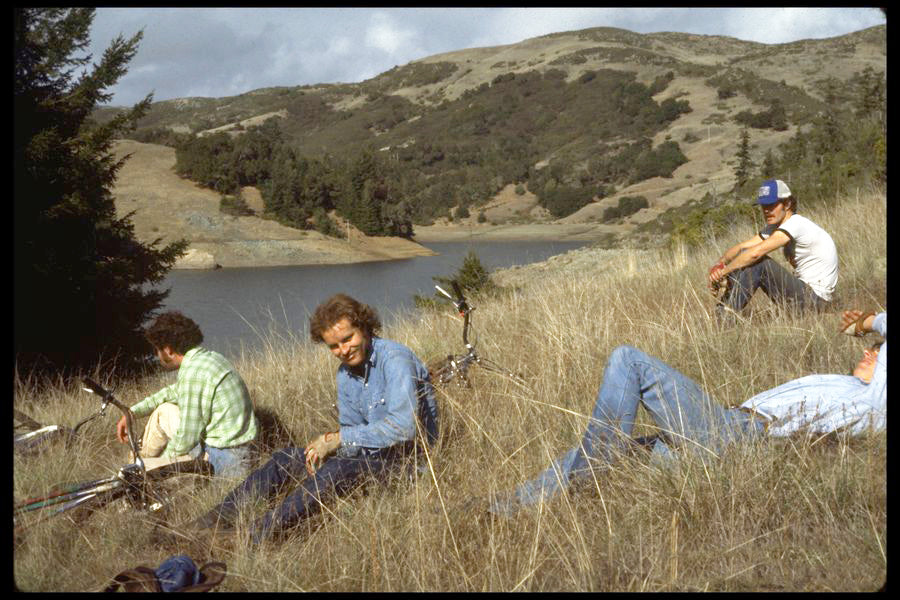

Sam: You’ve got some photos in the recent Rough Stuff Guide book - and there’s an old article printed in the back of the book about a link up between some Rough Stuff Fellowship members and a group of Marin riders. Were you conscious of the off-road cycling going on in other places around the world?
Wende: We began to get an inkling of an international interest in klunking a few years after we’d seen it begin to spread in the States, probably late ‘70’s. I recall a crew from the UK, visiting then, most likely generated by one of Charlie's articles. They did a photo shoot. I recall they were stoked!
Sam: In photos of other off-road cycling at this time in places like Japan or England, people are dressed like old-fashioned explorers, whilst the Repack riders looked more like they'd walked out of a band practice. How important was the Californian counterculture of the era in all this?
Wende: Let’s face it, we were just colorful, free-range hippies with no restrictions. Apparel was practical and low-key. Our uniform of choice was denim and plaid. Steel toed boots were our only “protection”. No helmets. Head gear was optional and usually worn as sun shade or a fashion accessory. Dressing in layers was generally done for inclement weather although we do get a lot of fog here, which presents a similar issue. Warm weather usually found us in shorts, tees and tennies...
Sam: A classic outfit. Even now the bike world can sometimes be guilty of being a bit of a boy’s club—how was it for you being the girl of the group?
Wende: I grew up the middle child in a family with eight kids, four boys and four girls. I gravitated towards my brothers’ wild, adventurous sense of play: building forts and treehouses, riding bikes, scooters, roller skates and skateboards. I liked activities that revolved around a tiny element of danger and adrenaline. I would have been described as a ‘tomboy’.
My integration into the world of klunking seemed a natural progression. I was accepted by all the guys, treated with respect and coached along the way. They supported and encouraged all my efforts and appreciated my tenacity. I may have been the last to reach the peak but I always made it.
Sam: What was going on in Crested Butte, Colorado? I’ve read somewhere that there was another scene of riders there in the 70s. How did they compare to your crew?
Wende: We didn’t know what we’d find on our first venture to Crested Butte in 1978. Their train of thought was in alignment with ours: venturing into the great outdoors via their own pedal power. Technology was a little underwhelming, but their passion was evident. They were definitely onboard for the ride and good sports, and we immediately identified with them—renegades like us! We’ve made many lifetime friendships with some of the Butte folk. Several of them, Kay & Don, started the original mountain bike museum, which eventually moved to Marin County.
Sam: What was the point when you realised mountain biking was spreading out beyond your little group?
Wende: I’d say it was the early 80’s when I first took note of its fast-growing popularity. Obviously places like Crested Butte had witnessed an influx of devotees. The annual Tour of Pearl Pass was growing exponentially each year and drawing a larger and farther-ranging audience.
The first production bikes were being manufactured and sold nationwide, appealing to the general public. Now more people could afford what once was considered a very esoteric bike. Specialized Bikes was making a name for itself. Component manufacturers were marketing to a newly developed mountain bike niche, word was spreading by word of mouth.
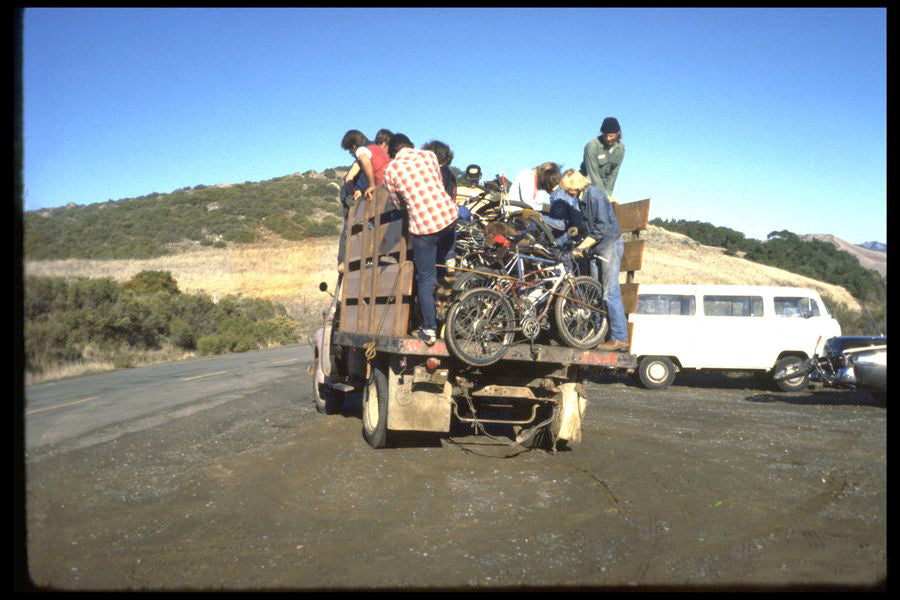

Sam: You’ve spent a while archiving your photos over the last few years—did you notice anything new in the photos that you maybe hadn’t thought about when you were first taking them?
Wende: Oh yes, I’ve unearthed a few gems that might be worthy of review. As we age, our “elders/founding fathers” are falling victim to that strange phenom—death—so I think it’s vital that their story be told. The images help tell the tale. And they don’t lie… the reality is recorded on film for all to see and cannot be disputed.
Sam: Looking back at all this now, do you have a favourite memory from that time?
Wende: Some of my favorite memories were moonlight rides, although my all-time fave took place as a moonlight/sunrise ride. We attacked the climb in the early hours of the morn and reached the peak as the sun rose. We enjoyed hot coffee and fresh donuts; a treat packed for our surprise reward for having reached the summit.
Sam: Sounds ideal. What are your thoughts on mountain biking today—the bikes are maybe a little more suited for the job, but does so much equipment and technology sometimes get in the way?
Wende: Oh God, I cannot relate to today's bikes, they’re so radically different from what we rode. I never really paid much attention to the gradual technology, but it feels like I blinked and everything changed. The advancements seem light years away from the basic, homespun contraptions we hobbled together from random parts. Everything is state of the art, high tech and expensive!
I value the extra effort exerted to get our old machines up those gnarly, dirt roads. We just didn’t have the gears for climbing but we were determined anyway. There was an exceptional feeling of ‘can-do’ once we achieved our goal, and a shared joy of overcoming the pain!
Sam: That makes sense—it feels like recently there’s maybe been a resurgence of people riding things more in line with what you were riding back then—probably for the same reasons you mentioned. What bike do you ride now? Do you still get out into the mountains?
Wende: My custom Breezer from 1986 is my main ride. I was gifted a Breezer SuperCell several years ago but I still have issues adapting to the new technology. I have to admit, I haven’t been out on the bike in a while but I do hike every day, religiously. I live right next to open space and have full access to all the trails, many of which are used by mountain bikers. It’s encouraging and heartening to see so many people on bikes now, especially if it’s women and kids. I really like the aspect of uniting youngsters and parents—it’s a healthy pastime for the whole family. What an invention this turned out to be—a profound and powerful tool that has the potential to change the world.
Sam: Definitely. Rounding things off, what is it about the bicycle that is so special? People are really passionate about bikes—me included—why do you think these metal objects are so well loved?
Wende: Easy! A return to childhood innocence, a sense of freedom, independence and empowerment. Wind at your back, a feeling of flying, and most importantly, the sheer fun of it. It’s a wonderful vehicle for reflection and self-awareness, a powerful tool for mental health and a great workout. It transforms one to a higher place, physically, emotionally and spiritually. I was privy to a time and place that cannot be replicated, my life was changed forever when I met the mountain bike. And what a life it’s been!
